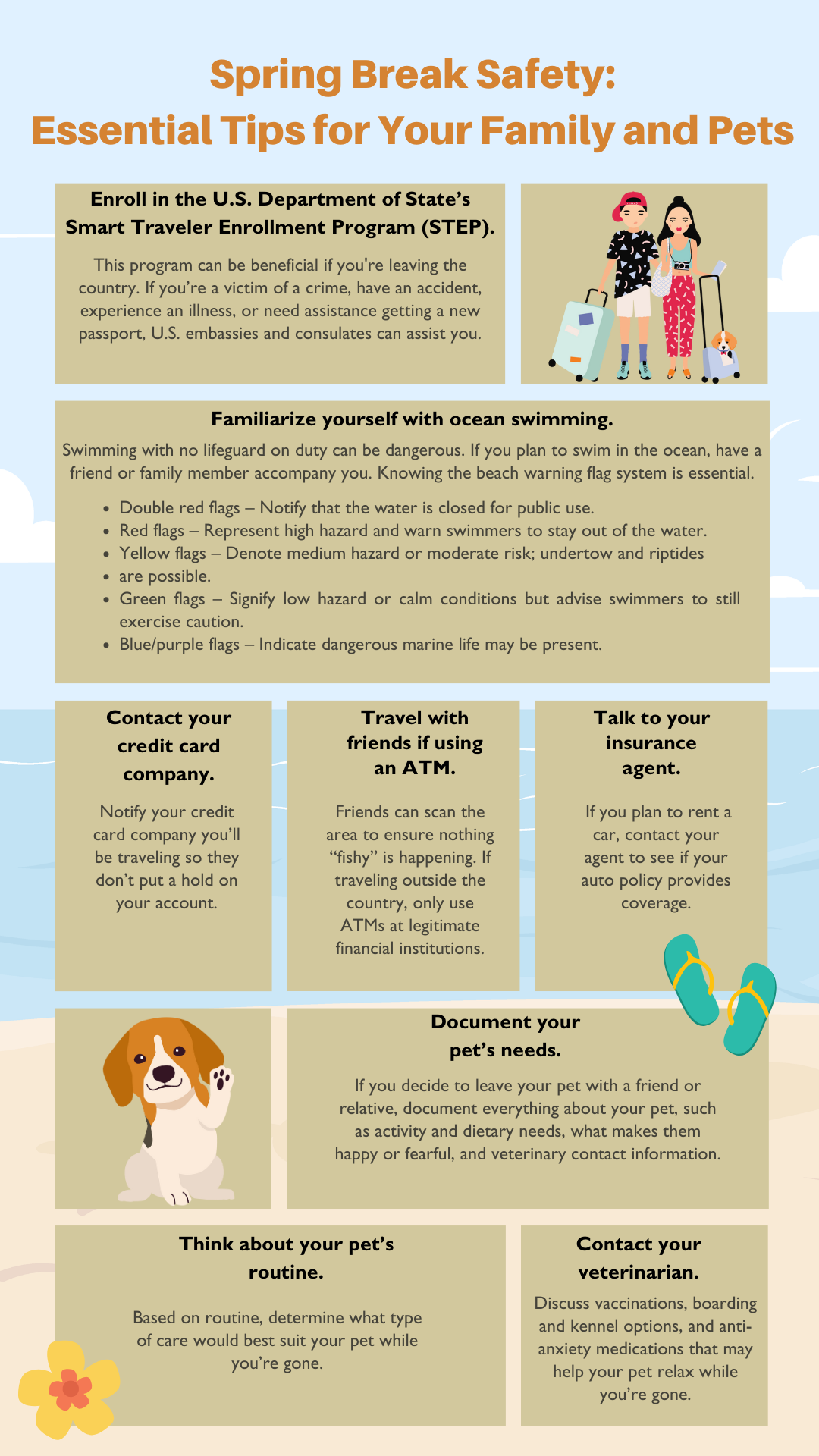As spring break approaches, families are getting ready for travel and adventure. However, amidst the excitement, don’t forget about the safety of your family and furry friends. Check out our infographic for some essential spring break safety tips.
Spring break safety tips
Click on the image below to download a PDF version of the infographic.
Infographic Transcript
1. Enroll in the U.S. Department of State’s Smart Traveler Enrollment Program (STEP). This program can be beneficial if you're leaving the country. If you’re a victim of a crime, have an accident, experience an illness, or need assistance getting a new passport, U.S. embassies and consulates can assist you.
2. Familiarize yourself with ocean swimming. Swimming with no lifeguard on duty can be dangerous. If you plan to swim in the ocean, have a friend or family member accompany you. Also, knowing the beach warning flag system is essential.
- Double red flags – Notify that the water is closed for public use.
- Red flags – Represent high hazard and warn swimmers to stay out of the water.
- Yellow flags – Denote medium hazard or moderate risk; undertow and riptides are possible.
- Green flags – Signify low hazard or calm conditions but advise swimmers to still exercise caution.
- Blue/purple flags – Indicate dangerous marine life may be present.
3. Contact your credit card company. Notify your credit card company you’ll be traveling so they don’t put a hold on your account.
4. Travel with friends if using an ATM. Friends can scan the area to ensure nothing “fishy” is happening. If traveling outside the country, only use ATMs at legitimate financial institutions.
5. Talk to your insurance agent. If you plan to rent a car, contact your agent to see if your auto policy provides coverage.
6. Document your pet’s needs. If you decide to leave your pet with a friend or relative, document everything about your pet, such as activity and dietary needs, what makes them happy or fearful, and veterinary contact information.
7. Think about your pet’s routine. Based on routine, determine what type of care would best suit your pet while you’re gone.
8. Contact your veterinarian. Discuss vaccinations, boarding and kennel options, and anti-anxiety medications that may help your pet relax while you’re gone.







